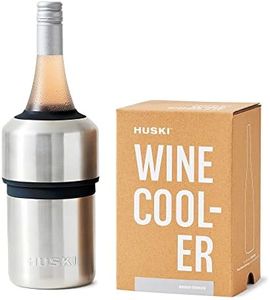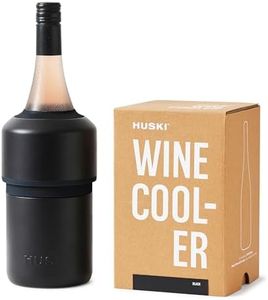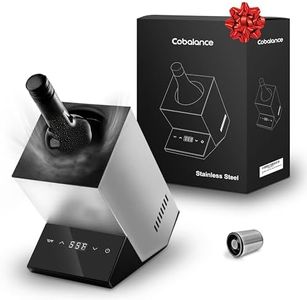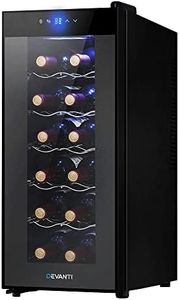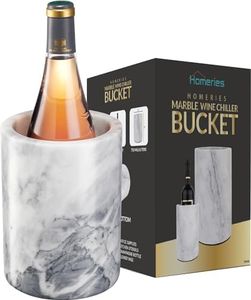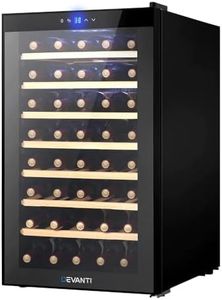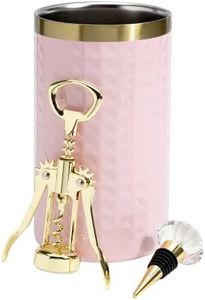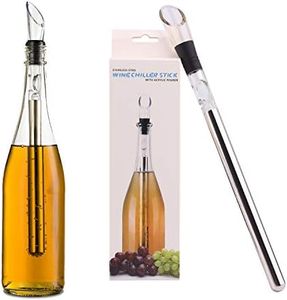We Use CookiesWe use cookies to enhance the security, performance,
functionality and for analytical and promotional activities. By continuing to browse this site you
are agreeing to our privacy policy
10 Best Electric Wine Chillers
From leading brands and best sellers available on the web.Buying Guide for the Best Electric Wine Chillers
Choosing an electric wine chiller is all about matching the device to your wine habits and lifestyle. These gadgets keep wine at an ideal serving temperature, letting you enjoy wine at its best without having to rely on your fridge or guesswork. Understanding the most important features can help you select a model that maintains the right temperature, fits your space, and is convenient and easy for you to use. Take a moment to think about how often you enjoy wine, what types of wine you prefer, and where you’ll be placing your wine chiller. This will help you focus on the specs that matter most for your situation.CapacityCapacity refers to how many bottles the chiller can hold at once. This is a key consideration because it determines how much wine you can have ready to serve at the right temperature. Chillers can range from single-bottle models, which are compact and great if you only enjoy wine occasionally, up to larger column-style chillers that can store a dozen or more bottles for avid entertainers or collectors. Think about how many bottles you usually want chilled—if you entertain or enjoy a variety of wines, a larger capacity might be better, but for small households or limited space, smaller units are often more practical.
Temperature Range and ControlTemperature range and control refers to how cold the unit can get and how precisely you can set the temperature. This matters because different wines need different serving temperatures—whites and rosés are usually served colder than reds. Some chillers offer preset temperature buttons for common wine styles, while others allow you to set the temperature to a specific degree. A wide temperature range gives you flexibility, and digital controls usually offer more precision and ease. If you drink mostly one type of wine, basic controls may suffice, but if you want the flexibility for reds, whites, and sparkling wines, choose a model with adjustable, easy-to-set digital controls.
Cooling TechnologyCooling technology is the type of system the chiller uses to lower and maintain the wine’s temperature. There are two main types: thermoelectric and compressor-based. Thermoelectric chillers are usually quieter, more energy-efficient, and have fewer moving parts, which means less vibration (good for storing wine). However, they usually work best in moderate room temperatures. Compressor models are more powerful and handle hotter rooms better but might be a bit noisier. If you want a chiller for a quiet space or are sensitive to noise and energy use, thermoelectric is ideal. If you need strong, consistent cooling in a warm environment, consider a compressor-based chiller.
Size and PlacementSize and placement refer to the chiller’s physical dimensions and where you plan to keep it. Some models are countertop-sized, perfect for kitchens with limited space, while others are freestanding floor models that need more room. Make sure to measure your available space before deciding and consider the door swing and ventilation needs. If you have a small kitchen or bar area, opt for a compact unit; for larger rooms or serious wine drinkers, a bigger floor-standing model could be the right fit.
Ease of Use and Display FeaturesEase of use and display features cover how simple the chiller is to operate, adjust, and monitor. Look for things like easy-to-read temperature displays, intuitive controls, and interior lighting, which helps you see your bottles clearly. Some chillers also include features like touch controls or a transparent door to showcase your wine. If you want a no-fuss experience, prioritize chillers that offer clear displays and straightforward settings.
